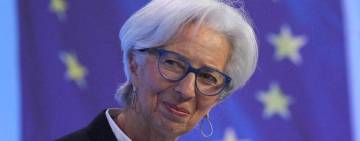To avoid speculative attacks, also against sovereign debt, it is best to be vague and flexible
The president of the European Central Bank, Christine Lagarde, will soon present a new “anti-fragmentation” tool to control the yields of the public debt of the euro zone. In doing so, she will have to address two key questions: how the ECB will determine that a country’s borrowing costs have reached a level that is unjustified by its economic situation, and what the ECB will do about it. If Lagarde has time to review the continent’s past currency crises, she should refrain from being too specific.
In the early 1990s, central bankers and finance ministers learned about speculative attacks the hard way. Before the introduction of the euro, European countries maintained partially fixed exchange rates; their coins could only move 2.25% above or below a certain level. In times of financial stress, central banks intervened to defend the exchange rate.
Limited foreign exchange reserves tempted investors to test the mechanism. Britain dropped out of the system in September 1992. France avoided the same fate the following year only because the German central bank stepped in to prop up the franc.
The arrival of the euro put an end to the risk of currency crises in the European Union. However, the lessons remain: to avoid speculative attacks, it is best to be vague and flexible.
The ECB has already made a show of it. The announcement on June 15 of the creation of a new instrument, likely to take the form of a specific bond purchase program, pushed down government bond yields. The spread between 10-year German sovereign bonds and the equivalent Italian titles fell from 2.42% to less than 2% in a few days, although it widened again after the bankruptcy of the Italian government.
However, some European central bankers seem determined to limit the ECB’s room for manoeuvre. The president of the Bundesbank, Joachim Nagel, wants to impose economic and fiscal conditions on that country whose yields are increasing. But then the ECB would not be able to intervene quickly to counter market turmoil.
Others, such as Ignazio Visco, governor of the Italian central bank, have said that a difference of more than 2% between German and Italian 10-year government bond yields would not be justified. But fixing a concrete figure would force the ECB to act even if, for example, a new government in Rome threw fiscal restraint out the window.
Lagarde would be in a better position if the ECB had not decided to stop its asset purchase programs earlier this year. His best bet is to remember the lessons of the 1990s and keep the details of his tool as vague as possible.













